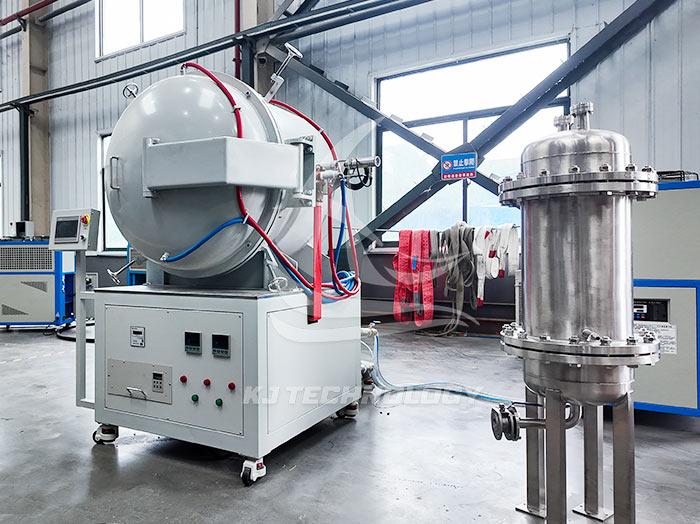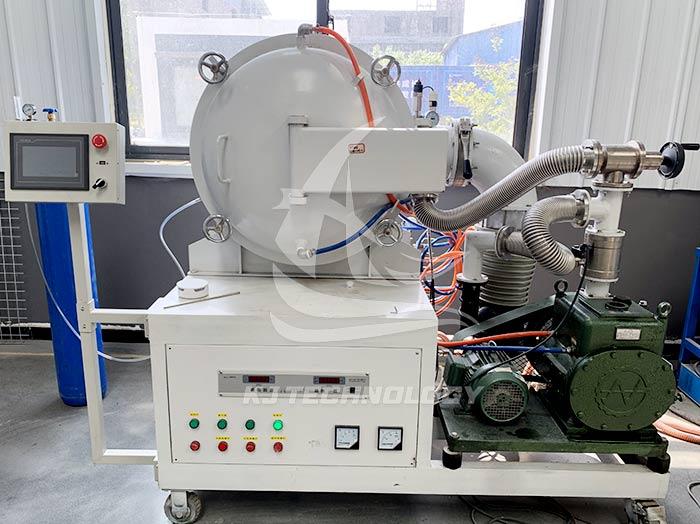Customized vacuum furnace for ceramic sintering
 08-28-2025 Author: KJ technology
08-28-2025 Author: KJ technology
The core information of customized ceramic sintering vacuum furnace is as follows:
1. Core functions and applications
High temperature vacuum sintering
Suitable for sintering high-purity ceramic materials such as alumina, zirconia, and silicon nitride, with a maximum temperature of 2300 ℃ (such as graphite heating element configuration), meeting the preparation requirements of high-performance materials such as hard alloys and ceramic seals.
Vacuum/Atmosphere Dual Mode
Protective gases such as nitrogen and argon can be introduced to achieve flexible switching between vacuum and atmosphere sintering, suitable for atmosphere sensitive ceramic materials (such as nitride ceramics).
Multi functional process support
In addition to sintering, it also supports processes such as degassing, melting, brazing, crystal annealing and purification, making it versatile and reducing equipment investment costs.
2. Key points of customized design
Furnace size and loading capacity
Customize the workspace according to the sample size, with common specifications such as 80 × 80mm, 120 × 120mm, 160 × 160mm, etc. The loading capacity ranges from 1kg to 5kg, suitable for laboratory research and development and small batch production.
Heating method selection
Resistance heating: Low cost, suitable for medium and low temperature sintering (≤ 1800 ℃).
Induction heating: Fast heating rate, good temperature uniformity, up to 2600 ℃, suitable for high-temperature hard alloy sintering.
Graphite heating: maximum temperature of 2200 ℃, excellent high temperature resistance, but requires inert gas protection to prevent oxidation.
Vacuum system configuration
Mechanical pump+diffusion pump: The ultimate vacuum degree reaches 5 × 10 ⁻ ³ Pa, meeting the requirements of conventional ceramic sintering.
Mechanical pump+molecular pump: Higher ultimate vacuum degree (5 × 10 ⁻⁴ Pa), suitable for the preparation of superhard materials or high-purity ceramics.
Automation and Security Design
PLC+touch screen control: realizes program heating, one click operation, and improves process repeatability.
Safety protection: equipped with water cut-off, overcurrent, overtemperature alarm and explosion-proof system to ensure stable operation of the equipment.
3. Selection suggestions
Laboratory research and development scenario
Prioritize miniaturization and modular design, such as a 160 × 160mm furnace equipped with infrared temperature measurement and manual control, to reduce costs while meeting basic research needs.
Industrial production scenarios
Recommend large furnaces (≥ 200 × 200mm), high-power heating (≥ 50kW), and fully automatic control to support 24-hour continuous production and increase production capacity.
Special material requirements
Transparent ceramics: require ultra-high vacuum degree (≤ 5 × 10 ⁻⁴ Pa) and precise atmosphere control to avoid impurity contamination.
Nanoceramics: require rapid heating (≥ 30 ℃/min) and short holding time to suppress grain growth.








